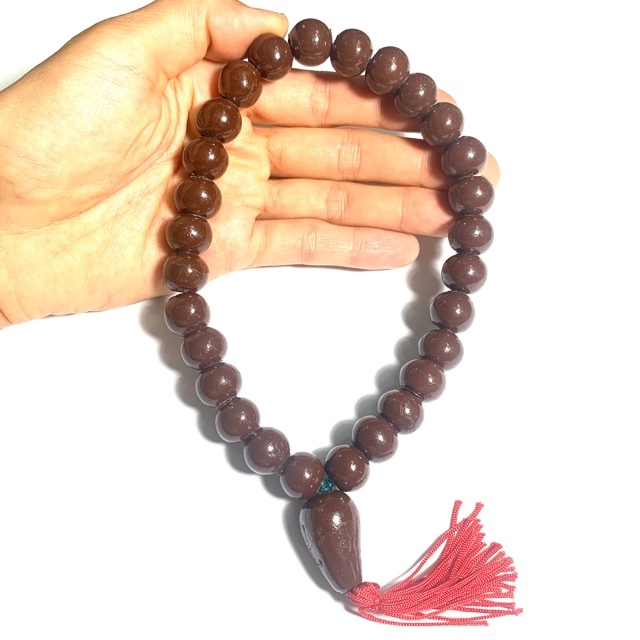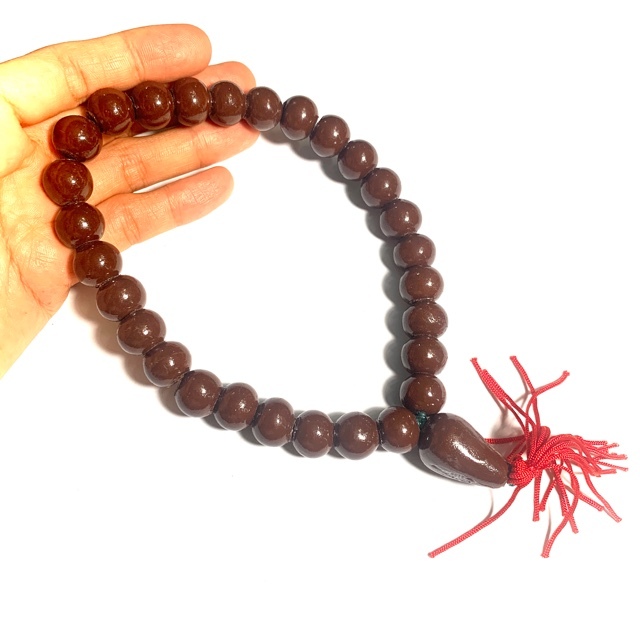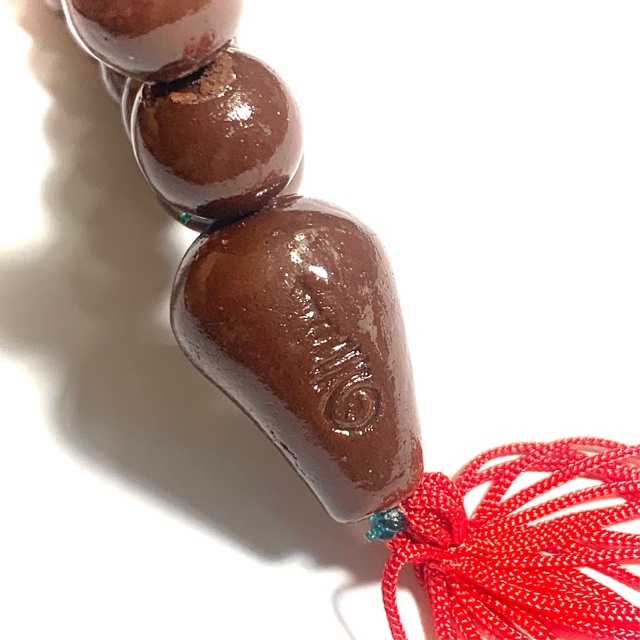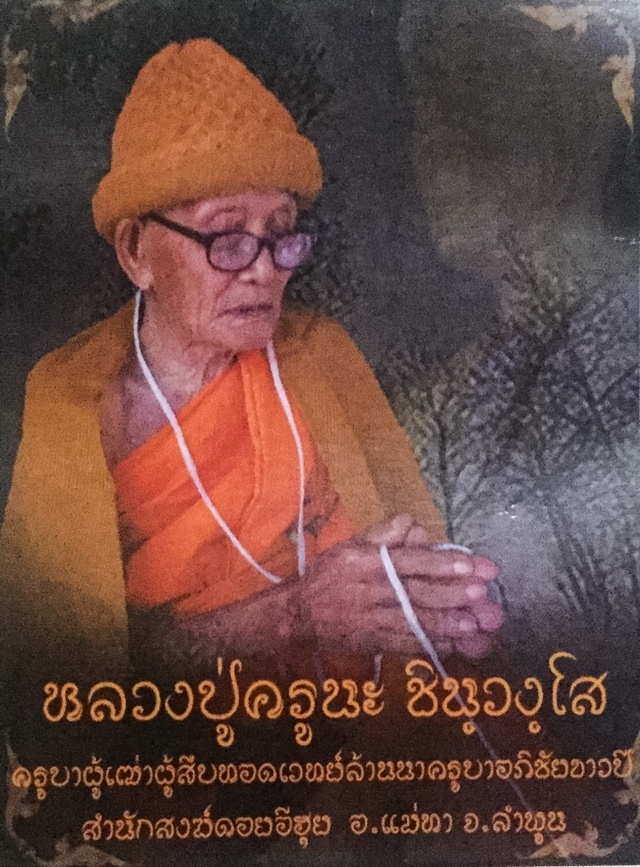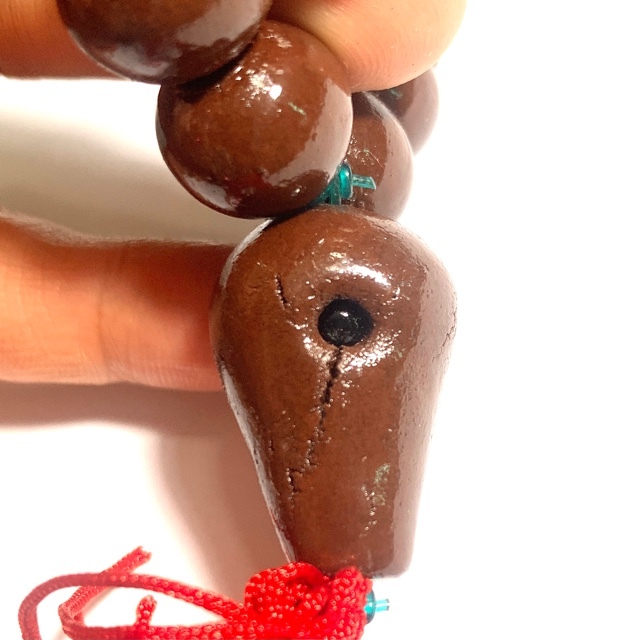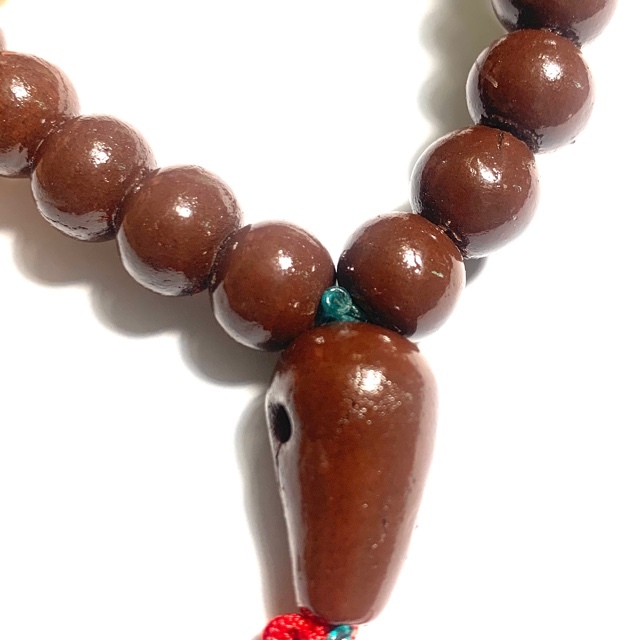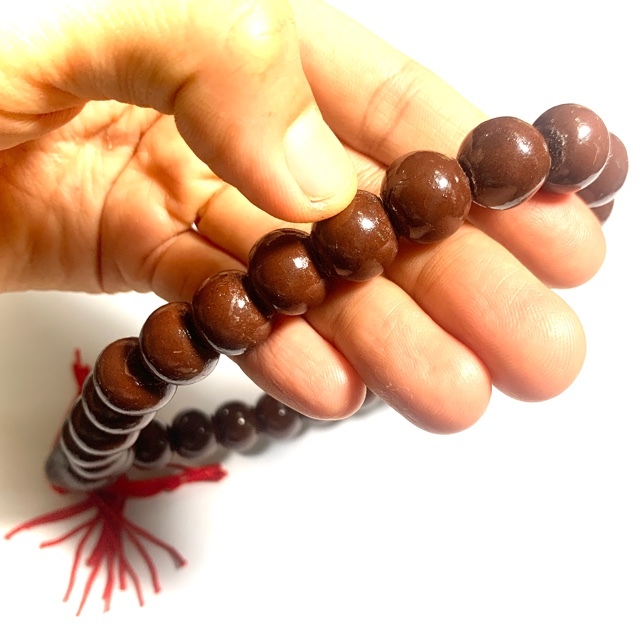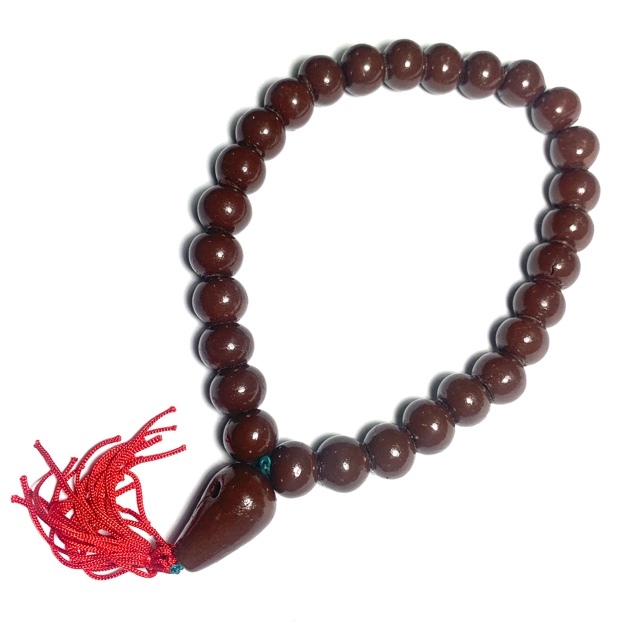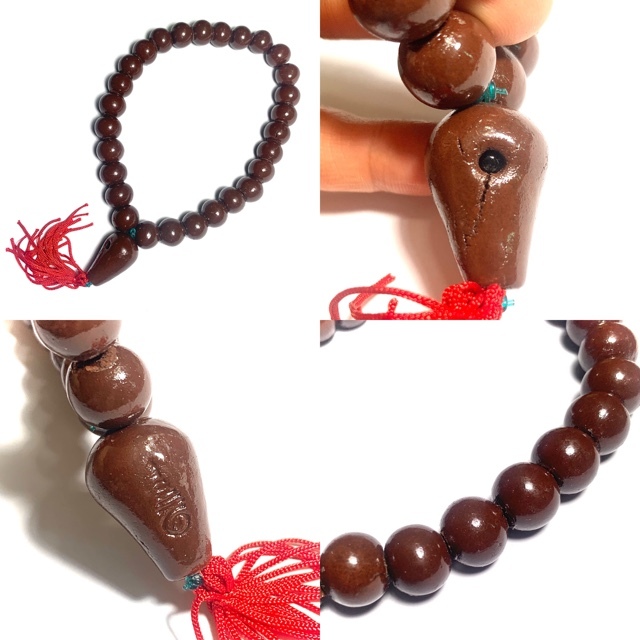Presenting the Prakam 108 Na Sethee, a powerful hand-held rosary crafted with care and dedication. This small rosary, made with sacred Nuea Pong Puttakun Yantra Powders and coated in herbal resins, is a testament to the expertise of Luang Phu Na Chinawangso. This rosary is an embodiment of multifaceted practice, i.e. meditation, chanting prayers, spellcasting, and development of one pointed focus, precepts, and good karma. The rosary was released as part of the Na Sethee Run Raek Run Sud Taay first and last edition series. The Mala Rosary has 108 Beads as is traditional in Buddhism.
Luang Phu Na Chinawangso skillfully crafted these powders using an ancient Wicha for Maha Pokasap, Metta, and Maha Lap Magic. These powders are not only known for their positive effects, but they also possess Serm Duang and Maha Lap qualities. This rosary acts as a shield against malevolent forces and aids in Klaew Klaad evasion. Its protective energy promotes well-being and repels negativity.
Designed for ease of use and meditation practice, the hand-held Prakam Rosary is a versatile tool. It provides protection against harm and is suitable for Lersi, Chanting practitioners, Bhikkhus, Yogis, Meditators, and Devotees alike. The central hub of the rosary features the sacred Na Sethee Millionaire Yantra, while the intricate red Daay Daeng Akom cords ensure its authenticity.
Learn more about Thai Lanna Sorcery.
Enhance your experience with the Prakam Rosary by practicing the Kata Na Sethee for Wealthiness. Begin by chanting the Maha Namasakara three times:
Namō Dtassa Pakawadtō Arahadtō Sammā Samputtassa
Namō Dtassa Pakawadtō Arahadtō Sammā Samputtassa
Namō Dtassa Pakawadtō Arahadtō Sammā Samputtassa
Next, chant the empowering incantation three times:
NA MAA MEE MAA NGERN KAM MAA TONG KAM MAA NA CHAA LI DTI NA MA PA TA NA MOE PUT TAA YA
Dive deep into meditation by focusing on the Prakam beads, visualizing each bead as a radiant, crystalline light. Cultivate this imagery, allowing the light to expand within your mind’s eye. If you attain Jhanic Absorption Access, dedicate your newfound enlightenment to your loved ones and all beings. Empower your wishes with these meditative attainments, creating a profound connection with the Prakam Na Sethee.
This versatile rosary aids in precise counting and focus during specific occult rituals. Its protective properties extend beyond rituals, offering a shield against black magic and maintaining health. Carry it with you as a potent amulet, invoking the power of Luang Phu Na Chinawangso and his lineage of Master Sorcerers.
Luang Phu Na Chinawangso was a dedicated student of Kroo Ba Srivichai and inherited the Master Lineage Sorcery of Kroo Ba Apichai Khaw.
The final edition of this rosary, released in 2561 BE, carries the blessings of Luang Phu Na. Its auspicious empowerment aligns with the passing of Kroo Ba Na. Remarkably, the edition’s name, ‘Na Sethee Run Raek Lae Run Sud Taay’ (first and last edition), seems to foreshadow the end of an era. This rosary stands as a testament to his legacy.
Harness the Prakam rosary’s protective and meditative properties. Its energy shields against black magic and psychic interference, allowing for focused meditation. Wear or carry it to invoke Buddhanussati remembrance and safeguard against negative influences.
Kata Aaraatanaa Pra Krueang

A Buddhist mala, also known as a Buddhist rosary, is a string of beads used for counting prayers, mantras, or breaths during meditation and spiritual practices. The mala is an essential tool in various Buddhist traditions, particularly in Tibetan and Zen Buddhism. While malas can come in different sizes and configurations, the 108-bead mala is one of the most common and significant designs.
Here’s what you need to know about the 108-bead Buddhist mala:
- Number 108: The number 108 is considered sacred and significant in many Eastern spiritual and religious traditions, including Buddhism. It is believed to represent various aspects of the universe, such as the 108 stages of the journey to enlightenment or the 108 defilements to overcome. There are also mathematical and astronomical reasons for the significance of 108.
- Beads and Materials: A traditional 108-bead mala is usually made of beads, often of wood, seeds, or gemstones. The choice of material can vary based on personal preference or the specific intentions of the practitioner. Each bead on the mala is used to count recitations of a chosen mantra or prayer.
- Guru Bead: In addition to the 108 counting beads, a mala often has a larger bead or pendant called the “guru bead.” This bead marks the starting and ending point of the mala and is not counted among the 108 beads. It symbolizes the guidance of the guru or spiritual teacher.
- Counting Method: Practitioners hold the mala in one hand and use their thumb to move from one bead to the next after each recitation of a mantra or prayer. The index finger is not used, as it symbolizes ego, which should be transcended during meditation.
- Mantras and Meditation: The primary purpose of a mala is to aid in meditation and mantra recitation. As the practitioner moves through each bead, they repeat their chosen mantra or prayer. The repetitive action of counting and reciting helps to focus the mind and cultivate a sense of mindfulness and concentration.
- Energetic and Spiritual Significance: Malas are believed to carry spiritual and energetic qualities based on the materials used. Different gemstones or seeds are associated with specific intentions or qualities, such as compassion, wisdom, or healing. The mala can become a personal talisman or a tool for enhancing one’s spiritual journey.
- Personalization: While the 108-bead mala is the most common design, there are variations, such as wrist malas with fewer beads, as well as longer malas with additional counters for larger numbers of repetitions. Some practitioners also create custom malas with specific intentions, choosing beads that resonate with their personal spiritual goals.
It’s important to note that the use of a mala is deeply personal and can vary based on individual practice and tradition. Whether for meditation, mantra recitation, or as a symbol of one’s spiritual journey, the 108-bead Buddhist mala holds a special place in Buddhist practice and is cherished by practitioners around the world.
The Meaning of 108
Within the context of Buddhism, the numerical value of 108 holds significance as it establishes a link to the fundamental principles of the dharma. In an intriguing geometric correlation, when considering the human form encapsulated within a circle, emblematic of Earth, a discernible connection is drawn: each of the internal angles of the five-pointed star thus formed amounts to 108 degrees.
Turning our attention inward, the construct of the heart chakra reveals a composition of precisely 108 distinct channels of energy known as nadis. Concurrently, the heart chakra features an arrangement of 108 pressure points, termed marmas, further underscoring the prevalence of this numerical motif within the somatic framework.
A physiological threshold of note emerges at 108 degrees Fahrenheit (108ᵒF), at which juncture a critical juncture is reached. Beyond this threshold, the delicate equilibrium governing our vital organs becomes perturbed, resulting in a cascade of overheating phenomena culminating in the cessation of organ functionality.
Expanding the purview to a cosmic context, an astronomical relation is evident in the parameter measuring the expanse between Earth and its solar counterpart, the sun. This interval is found to be precisely 108 times the diameter of the sun, thereby manifesting a harmonious linkage between macrocosm and microcosm.
In summation, the number 108 serves as a conduit, binding the individual to both the intrinsic self and the broader cosmological milieu, thereby facilitating a profound nexus between the individual’s innermost contemplations and the expansive tapestry of the external world.

